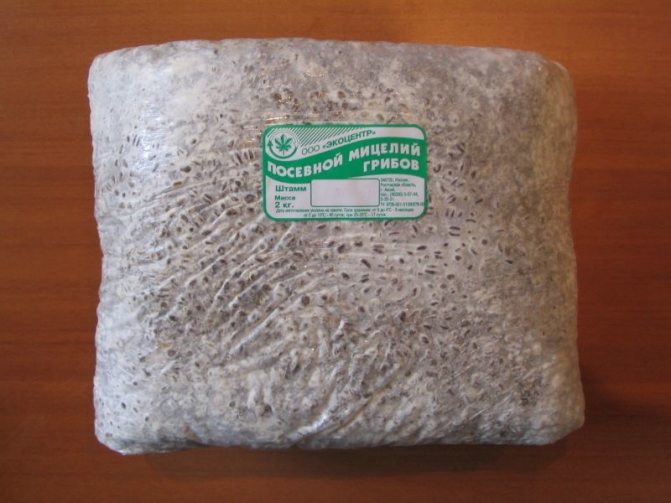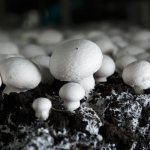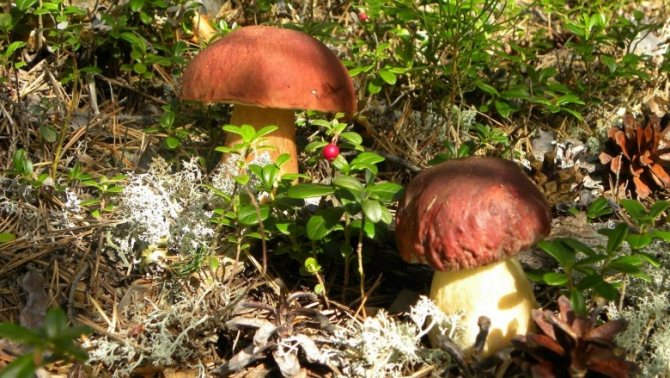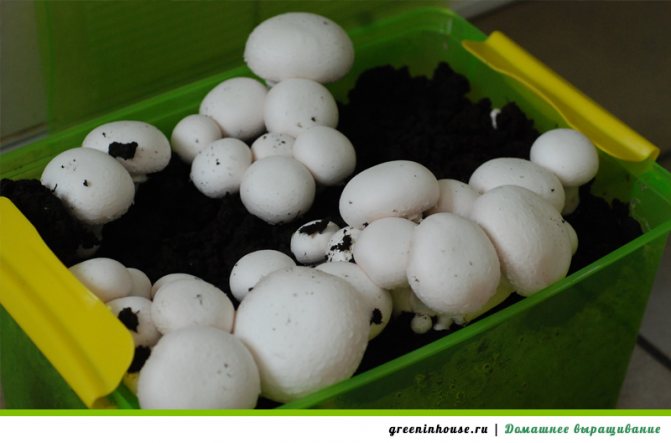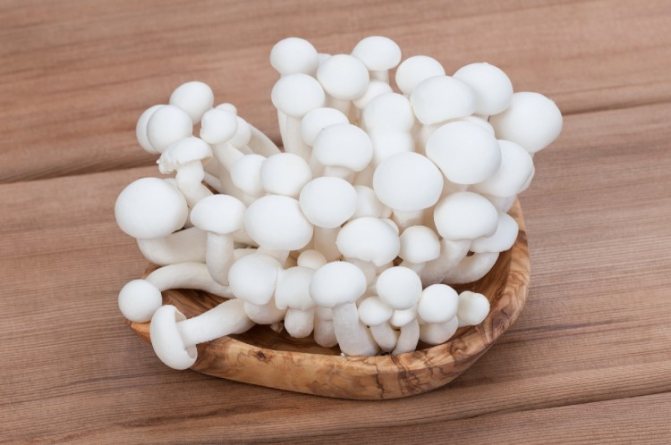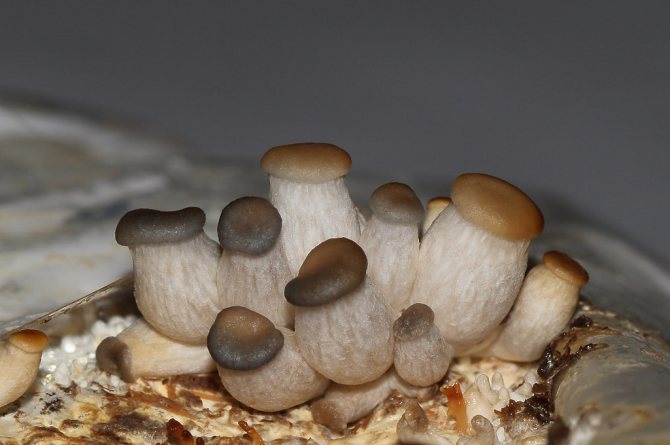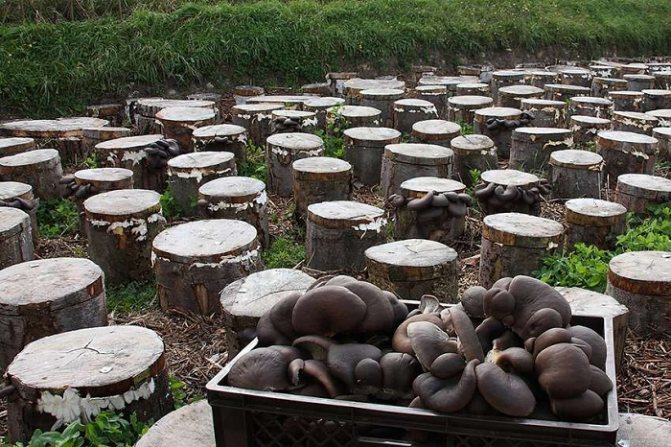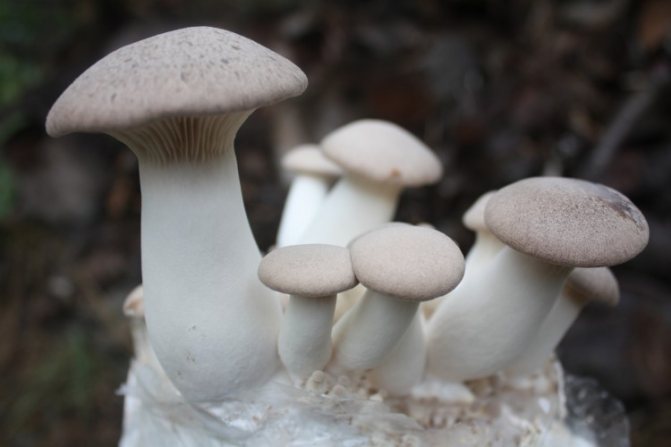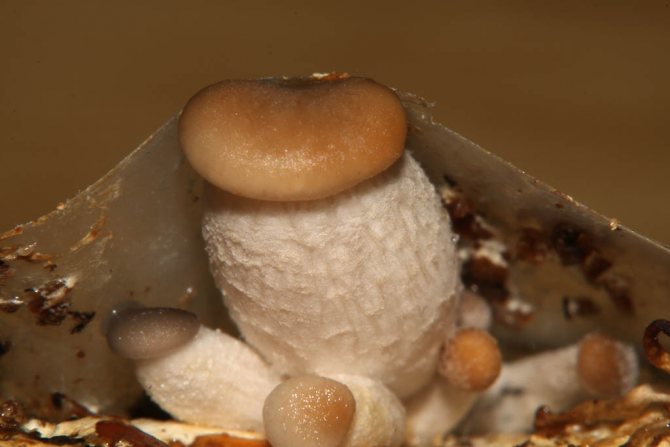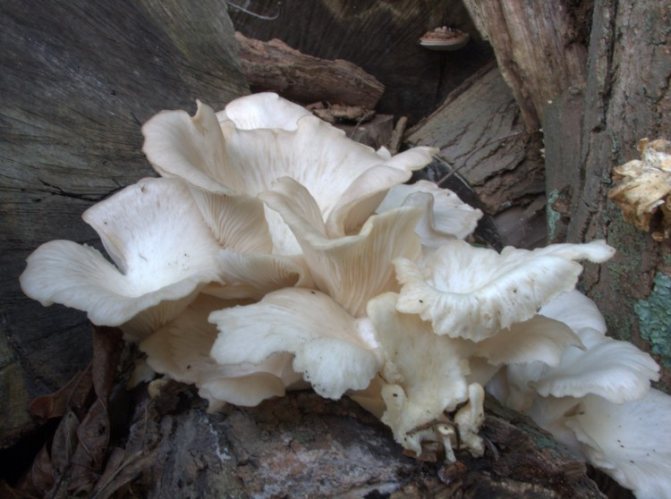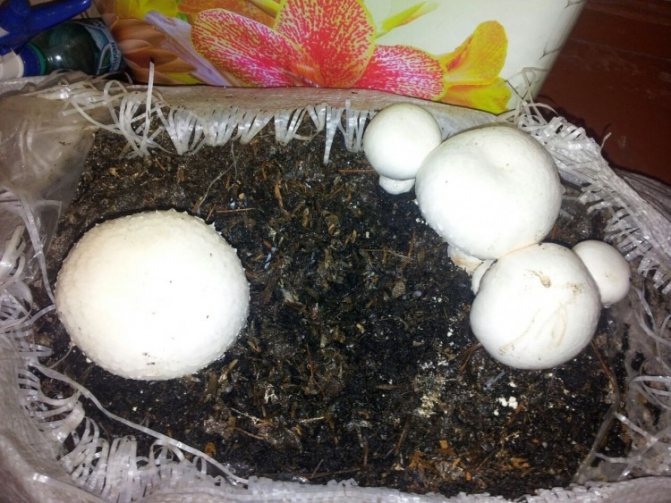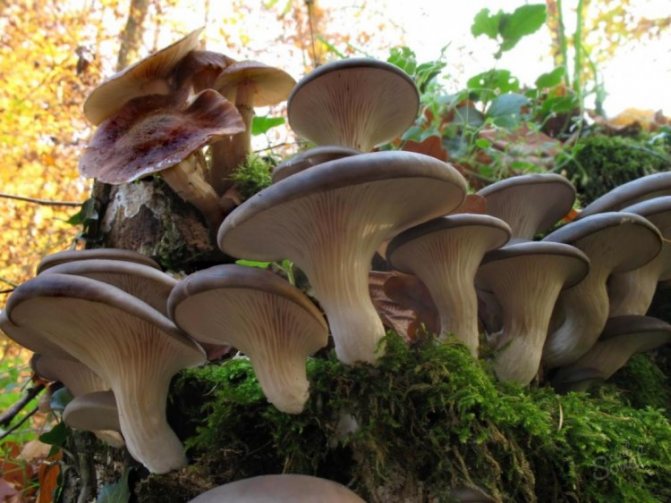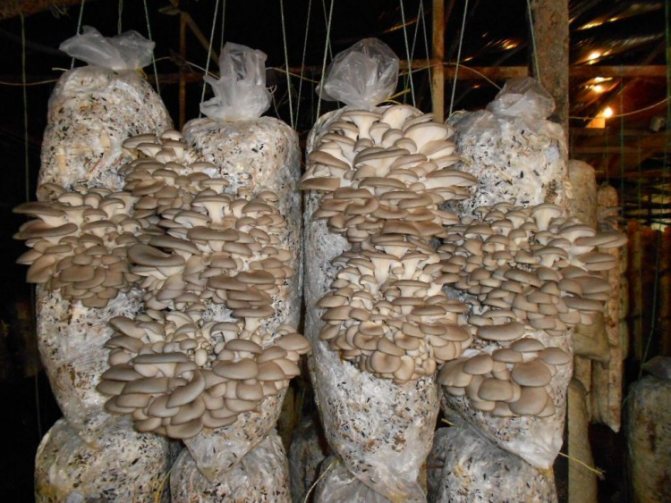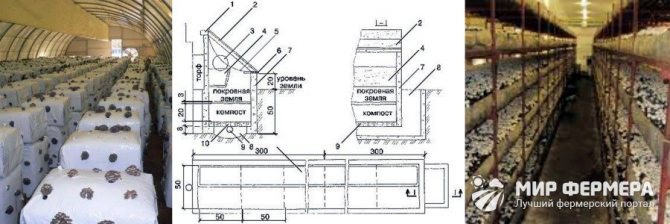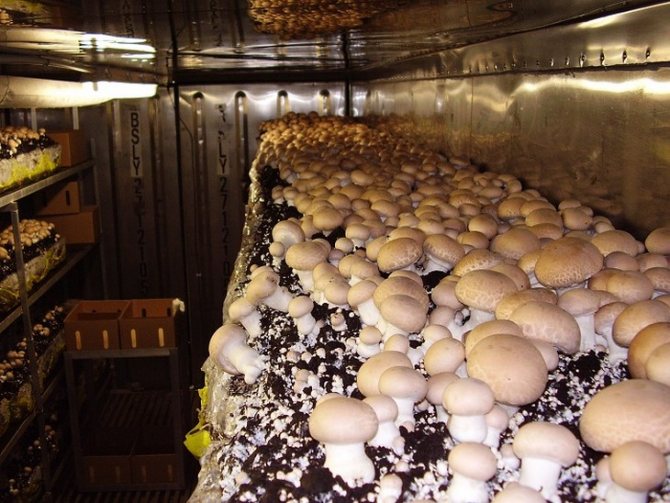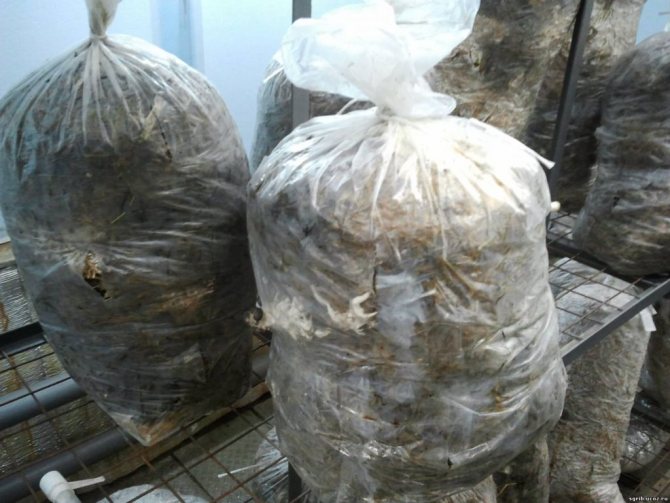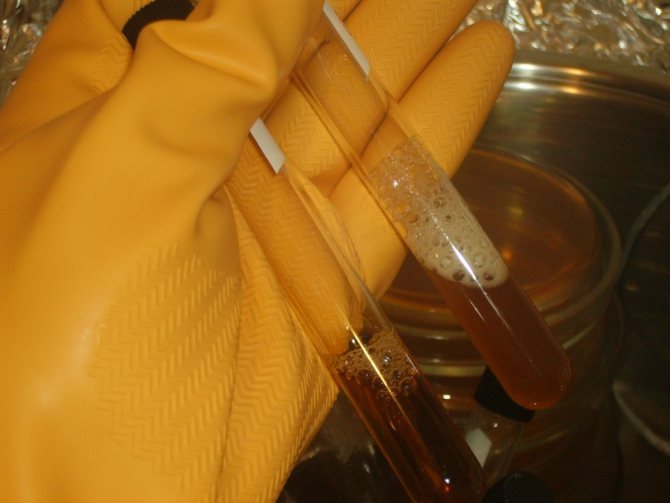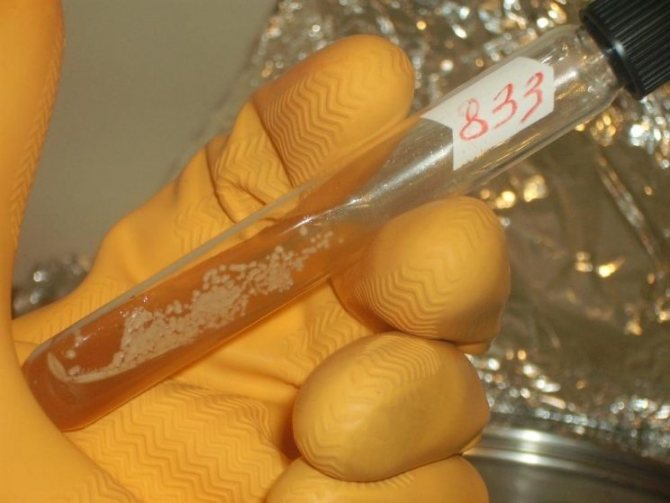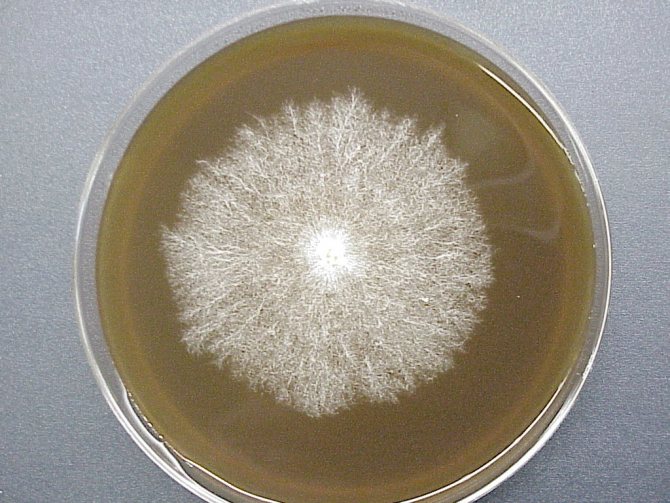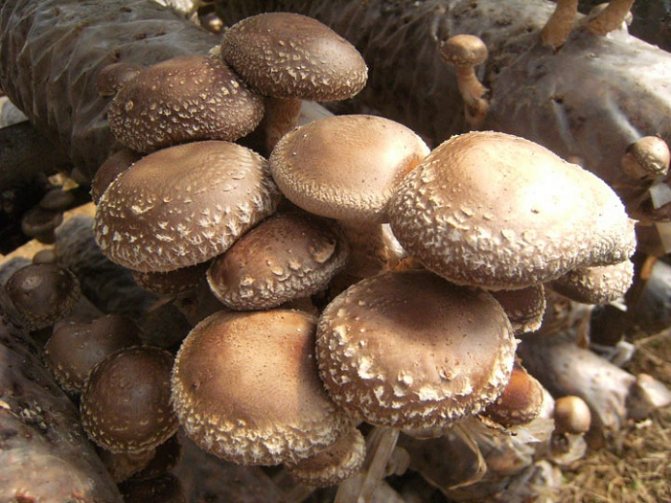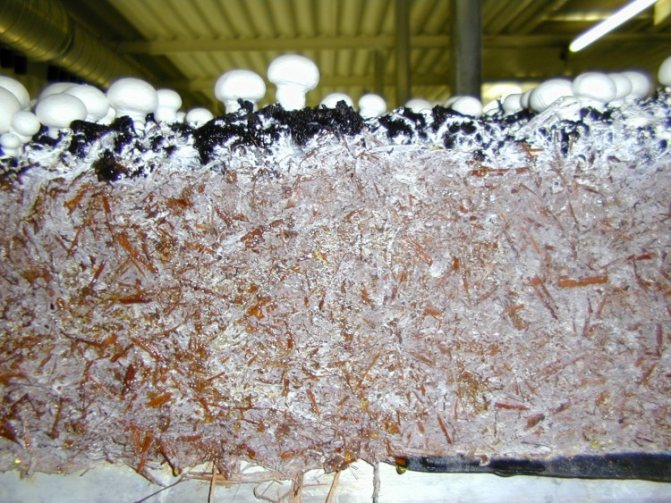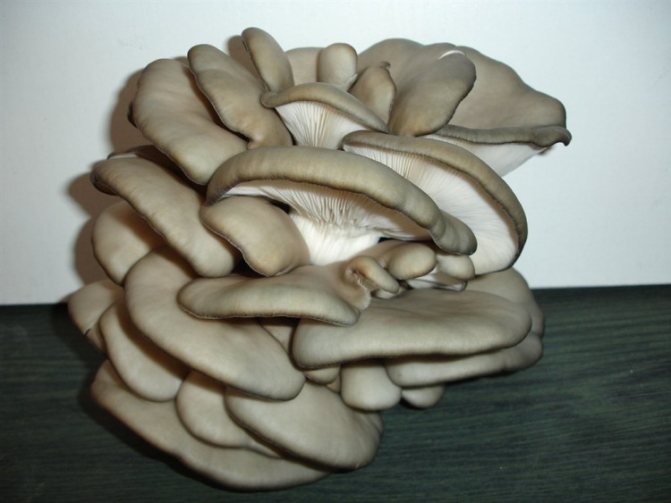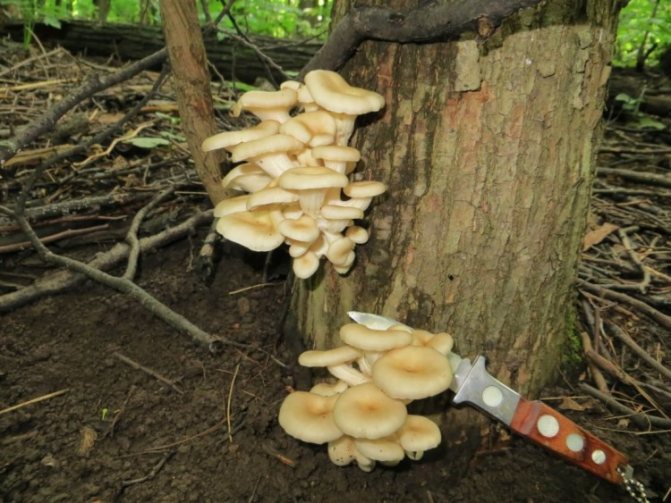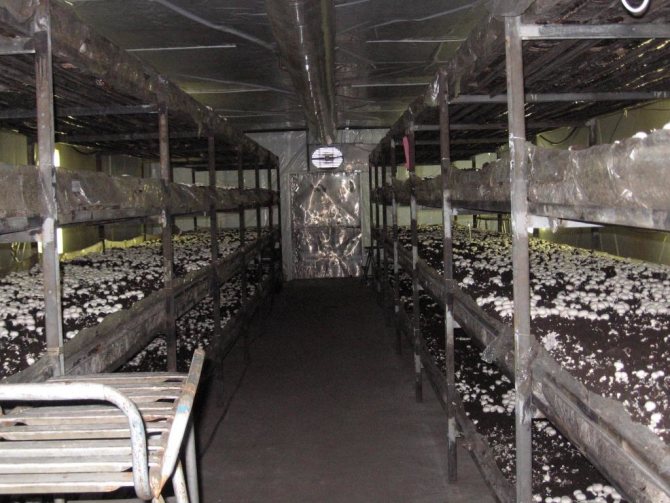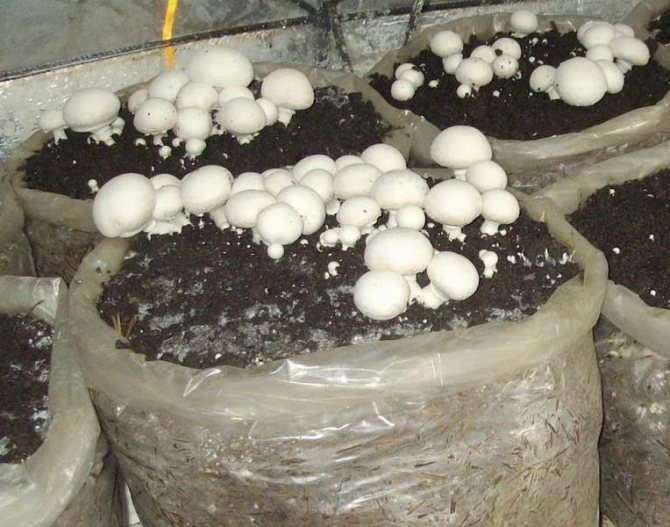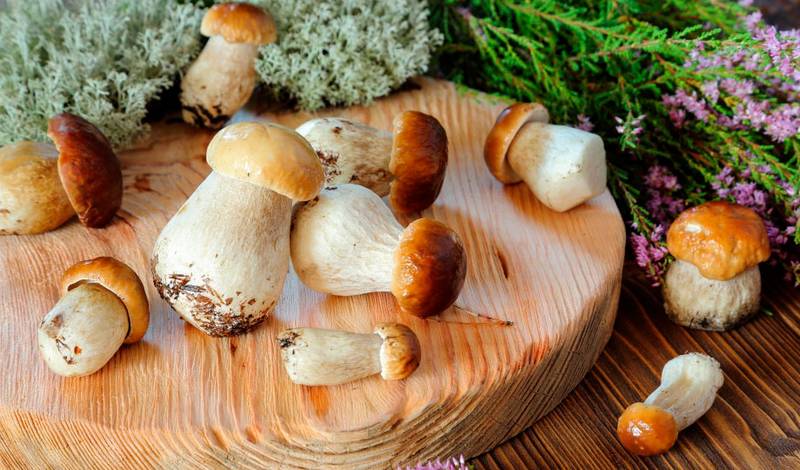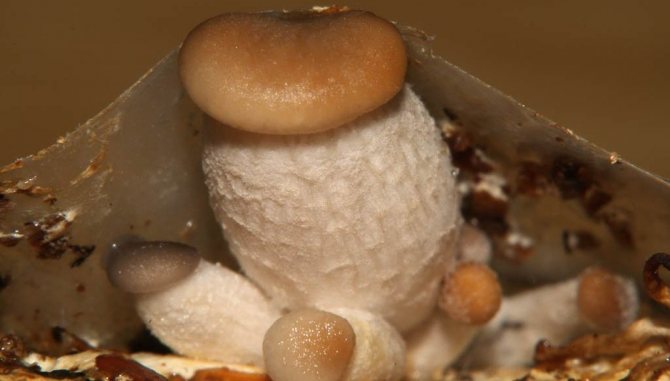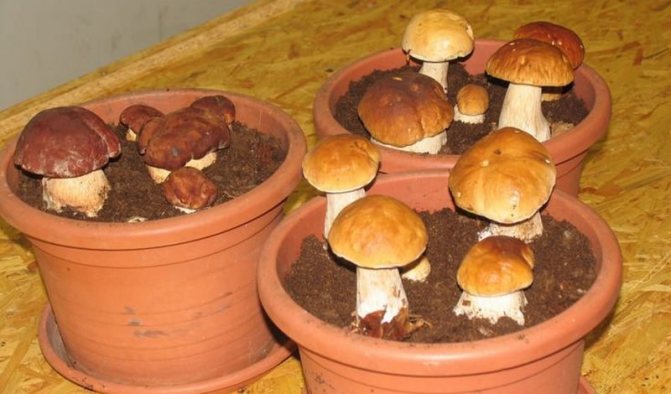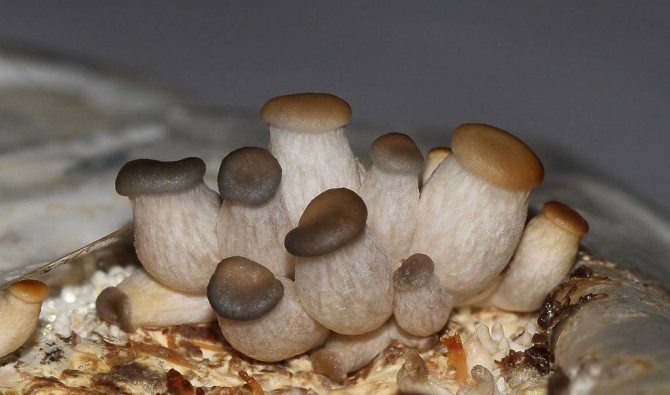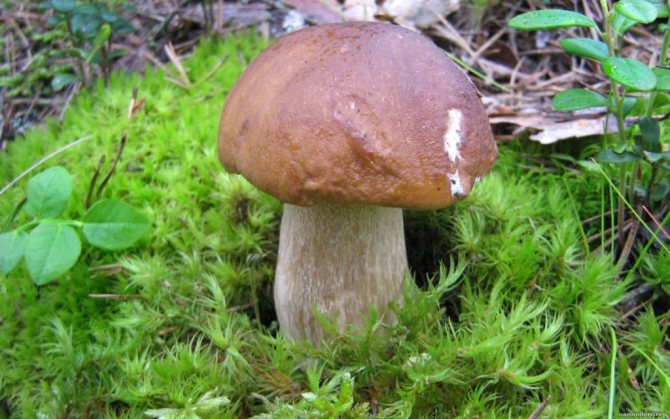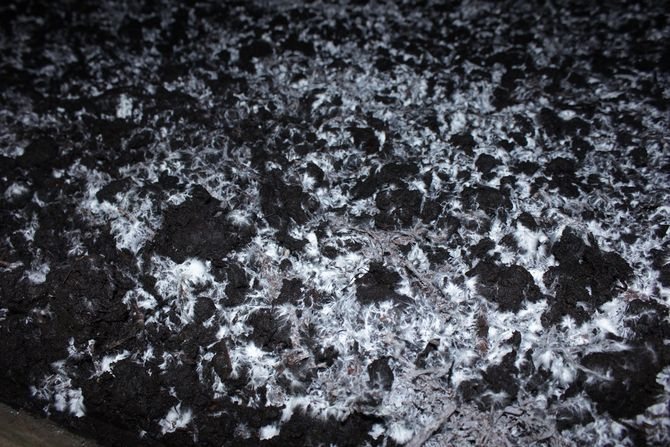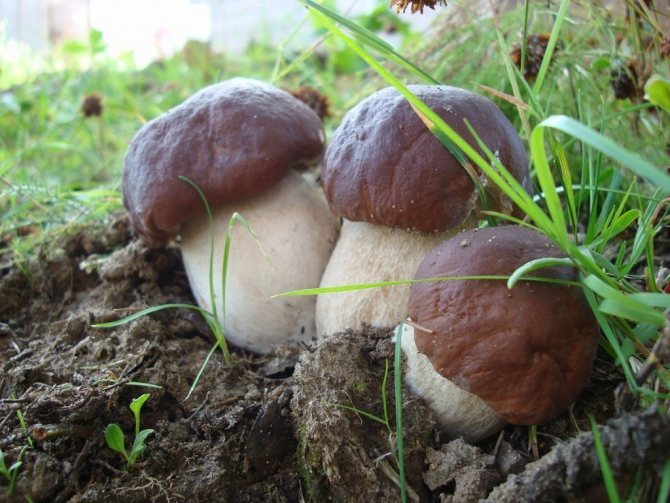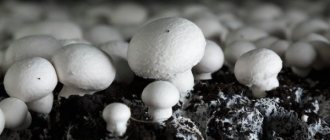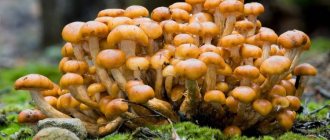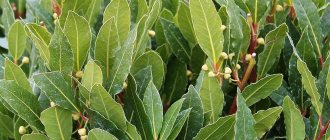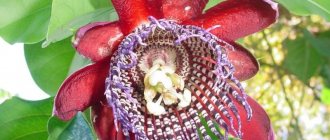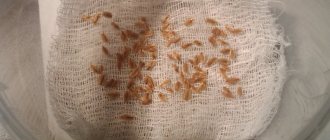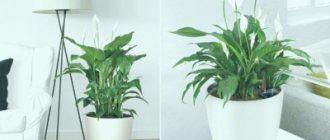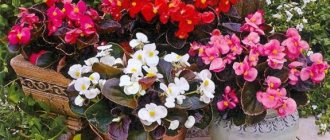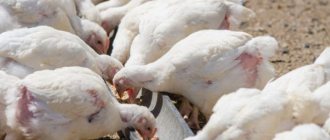Growing champignons at home is an easy task if you know what kind of room is needed for this, as well as what components to use to ensure stable and high-quality fruiting. Today, they use several popular methods of growing mushrooms on the territory of their home.
What mushrooms can be grown at home
After assessing your capabilities, namely: the availability of sufficient area, sufficient opportunities to provide the required temperature, humidity and light, you can start growing mushrooms at home. The first step is to decide what species you want to see in your garden. The possibilities of the agricultural industry allow active amateur mushroom pickers to both grow mushrooms at home all year round, almost any species growing in the forest, and spend minimal effort on it.
What types of mushrooms can be grown at home? Let's figure it out. The simplest forest mushrooms are porcini, chanterelles, russula or boletus. Perfect for adding them to soups and hot dishes. Oyster mushrooms and mushrooms are very popular for salads and snacks. And even exotic species such as shiitaks, flammulines and ringlets. Usually shitaki, champignons or oyster mushrooms are chosen for a small home-made mushroom production, but other species can undoubtedly settle on your windowsill.
How to prepare a nutrient medium for growing mushrooms
The nutrient medium (substrate) for planting myceliums may well look like ordinary sawdust, shavings, finely chopped straw or corn stumps. For greater soil mineralization, chicken manure is added when preparing compost, or stalks of grain crops (for example, corn) or leaves fallen from trees are used as organic fertilizers.
The substrate must be sterilized before planting myceliums into it. Don't forget this! Since if you omit this point, then microorganisms that can multiply with the mycelium can spoil it. As a result, the mushroom will grow bad or sick. To carry out a simple sterilization procedure, it is enough to put a bowl with a soaked nutrient medium (most often straw or sawdust) in a microwave oven for a short time and warm it up at a high frequency for 2 minutes. If the liquid has not boiled away during this time, you can extend the procedure.
Planting mushrooms
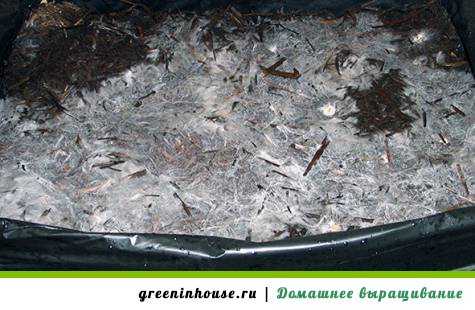
In order for the mycelium to spread better in the nutrient medium, it must be heated before the germination of mushrooms, since heat stimulates all processes associated with the growth and development of organisms. Warm up the nutrient medium at a temperature of about 20 degrees. And then, to spread the mycelium, you need to put the container in a light-proof box or cabinet for 21 days.
After three weeks, transfer the container to a place with a temperature of about 13-15 degrees. This temperature can be reached in a room that is not heated. To prevent the soil from losing moisture, cover the container with a towel soaked in water, or carefully monitor the soil and spray it. It is ideal to grow mushrooms in the basement of the house, as the conditions are much better there.
In the basement
Oyster mushrooms and shiitake can be grown year-round, for example, in the basement.This room maintains a constant temperature, there is good ventilation and the necessary twilight. It is desirable to divide the basement into two rooms. In one of them, the mushrooms will germinate, in the other, they will ripen. These processes take place at different temperatures.
Expert opinion
Trofimov Pavel Yurievich
Mushroom picker with 20 years of experience and our best mushroom expert
Ask a Question
One of the main conditions for a good harvest is the correct preparation of the substrate. It must be treated with boiling water or steam.
For sowing, polyethylene bags are used, where the substrate is placed. I do not recommend stuffing the bags too tightly, for the full development of the mushrooms you need air. An incision is made on the side of the bag along the entire length, into which the mycelium is laid. It is important to keep the temperature under control. During germination, it should be 22-25 degrees, then it is lowered to 12-18 degrees.
Much depends on the type of mushroom. Oyster mushrooms and shiitake mushrooms love moisture, unlike mushrooms, and honey mushrooms grow better on logs, and not in bags.
Alternative cultivation sources
You can grow mushrooms not only in a standard and simple way for you. If the period of growing mushrooms at the “amateur” level has already ended for you, and you want to try something new, then you can choose how to grow mushrooms at home using alternative options. This can be either sprouting myceliums in coffee grounds, or using birch plugs (growing mushrooms on a tree or log), or in a fairly simple way - from a set. These most common options are discussed in more detail below.
A fun way to grow mushrooms
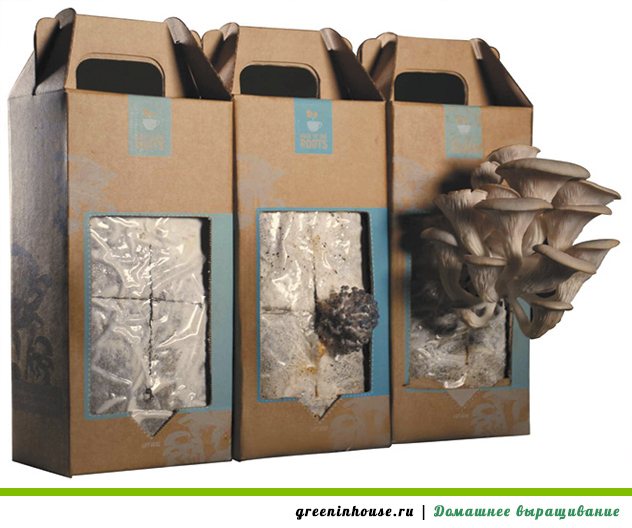

Growing mushrooms from the kit is fun and easy to implement. It may seem even simpler than the standard version. The set is very easy to use, quite inexpensive ($ 20-30), sold in a large number of online stores and gardening outlets.
To start using it, you do not need to sterilize the substrate, since the plastic bag in which it is located is already filled with completely prepared soil. It is only necessary to contain an open package in mandatory conditions and in less than 2 weeks you will be able to observe the mushrooms grown with your own hands on your windowsills. What mushrooms are grown at home in this way? Basically the most common varieties such as champignons, shitaki and oyster mushrooms.
The most important thing when growing mushrooms from a kit is to install it in a place with the right lighting. It should be bright, but not in direct sunlight. Also, do not forget to constantly moisturize the soil in the bag.
Types of mushroom cultivation
Mushrooms are grown in several ways: indoors or outdoors. Each method has its own specific requirements, the observance of which will allow you to get a large and high-quality harvest.
In the basement (in bags)
Experienced mushroom growers recommend using large plastic bags for growing mushrooms. This method is initially attractive in that it is possible to move the bags to any place.
How is the cultivation procedure carried out:
- A nutrient substrate is prepared, which consists of 70% horse manure and 25% compost mixture.
- Disinfect the substrate by heating up to 25 degrees.
- The mixture is laid out in bags 25-30 cm thick and the mycelium is planted.
- Leave on the rack for three days, after which 5-6 slots are made in the bag and left in the dark at a temperature of 18-20 degrees.
- After 2-3 weeks, mushrooms will begin to appear in the slots. The bags are transferred to a well-ventilated and constantly illuminated area.
- The mushrooms gain marketable weight in about 3-4 weeks.
- After harvesting, the bags are transferred back, after which the mushroom begins to grow again.
When fruiting, you need to monitor the moisture level - it should be about 70-95%. They also monitor the temperature of the substrate - 20-27 degrees.
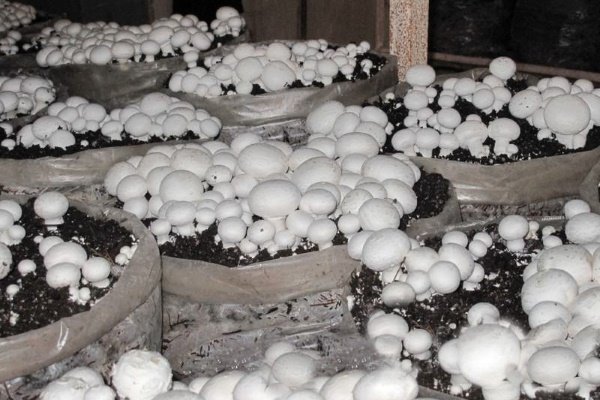

In the garden
For planting mushrooms, the site is prepared in the fall: the top layer of soil is removed - about 30 cm. The width of the beds should not be less than 1 meter. A distance of 55 cm is kept between the rows. A layer of expanded clay is poured at the bottom, which serves as a drainage layer. Its thickness should be 9 cm. Weeds are thrown over it, watered with mullein solution, sprinkled with soil.
Before laying the substrate on the beds, the soil is disinfected using a carbation solution. In the substrate, holes are made with a depth of at least 5 cm. The mushrooms are deepened into the hole by a few centimeters, sprinkled with a substrate. When using grain mycelium, it is scattered over the surface of the soil and tamped. Along the border of the bed, bends are made to drain excess moisture.
At a soil temperature of 25 degrees, the growth of mycelium occurs within 14 days. At a temperature of 30 degrees, the death of the mycelium is possible. For convenience, it is planted in a checkerboard pattern at a distance of 25 cm between the holes. After planting, the beds are mulched with straw, which helps to evaporate moisture. After rooting the mycelium, the straw is removed and covered with a covering layer using peat and chalk in a ratio of 9: 1.
On the balcony (at home on the shelves)
Growing on the balcony is one of the most convenient methods suitable for those who live in an apartment. No special physical and financial costs are required. This procedure is quite simple:
- Glazing and insulating the balcony.
- Build a small cabinet with shelving and drawers 20 cm high.
- Install a ventilation pipe with a valve in the cabinet, put a humidifier below to maintain the required humidity level.
- To prepare the substrate, mix 10 kg straw, 15 kg bird droppings, 8 kg alabaster. To increase the yield will allow the addition of superphosphate and urea - 200 g each. Everything is mixed in warm water. The boxes are insulated with moss.
- The substrate matures for 3 weeks. After that, add mycelium, preferably grain. It is evenly scattered on the surface of the substrate and the same layer 4-5 cm thick is poured on top. m of the substrate area make 350 g of mycelium.
- 10 days after germination of the mycelium, it is covered with a mixture of chalk and peat in a ratio of 1:10. The layer thickness should not exceed 4-5 cm.
- 5 days after backfilling the cover soil, the air temperature is lowered to 17 degrees. The surface is regularly moistened with water.
Fruiting occurs in 50-60 days, and the harvest continues throughout the year.
Container way
A simple way to grow mushrooms both in the apartment and in the house. It is permissible to place containers with a substrate in any convenient place. How is the procedure carried out:
- Prepare the container, be sure to take not only the container, but also the lid with the pallet.
- Disinfect the container and load the substrate.
- Sow mycelium, deepening it by 4-5 cm.
- Moisten the soil with mycelium.
Particular attention is paid to watering. Temperature is a secondary factor, but care must be taken to keep the reading below 30 degrees. This method is good because 3-4 containers will be enough for your own consumption, while minimal investment will be required.
Watch a video about growing mushrooms in a container at home:
Block way
Many mushroom growers today prefer to buy ready-made blocks for growing mushrooms from a pressed substrate. Large production facilities press manure, peat, sawdust and seed husks into briquettes. For mushroom production, it is not necessary to choose premises with large areas. Due to the complete preparation of the blocks, it is not necessary to plant mushroom mycelium in them, because it is already in them. One block weighs from 2.5 to 20 kg.
The blocks are laid horizontally on shelves and pallets, and holes are made on their surface. Burlap, film or paper that covers it will help prevent the block from drying out.After covering the block with mycelium, it is covered with a casing layer, and the airing is stopped. It is advisable to moisten the blocks by spraying. The first harvest of mushrooms is harvested in 60-75 days.
Grow mushrooms from coffee grounds
In the active rhythm of city life, a large number of people start their morning with a cup of coffee. Now the used grounds will be useful to you too. After all, it is ideal for growing oyster mushrooms. Considering that the coffee was brewed at a high temperature, the grounds are completely sterilized and ready to be planted with mushrooms. The indisputable advantage of coffee grounds is the large amount of minerals and nutrients in it.
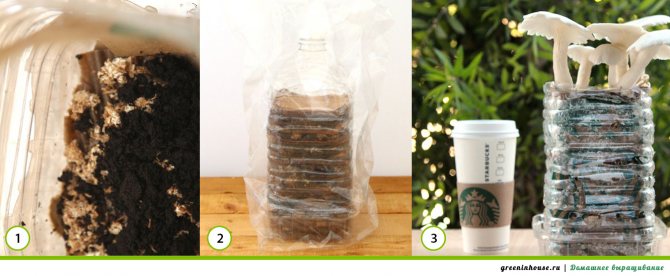

The coffee grounds are placed in a dense geotextile bag. It can be purchased along with myceliums at gardening stores. If there is no such bag, then a milk or ice cream bag is completely used, previously washed clean and with four holes made along the edges.
After placing the myceliums in the coffee grounds, the whole mass must be transferred to a bag. Conditions for the next 20 days are temperatures of about 20 degrees and darkness. After 20 days, the mycelium will completely settle in the thick and the contents of the bag will turn white. After that, you should place a bag or bag in a bright place with a shade for a week, making a small hole at the top and moistening it 2 times a day, so as not to let the soil dry out. Since mushrooms love moisture, and will not grow in too dry soil.
Growing mushrooms on logs
Shiitaki mushroom, unusual for our area, is best grown on a log. This method consists in the fact that hardwood logs are plugged with birch corks. Before that, they are completely inoculated with mycelium. They can be ordered online or in specialized stores selling mushroom spores or myceliums.
One of the important factors for a successful harvest is a quality log. The most commonly used logs are maple, oak or poplar. All logs must be of a certain size. The diameter is not more than 35 centimeters, but 1 decimeter long. The preparation of a log does not require any special manipulations, you just need to cut it out 15 days before the mycelium is settled in it. During this period, its natural anti-fungal properties are completely destroyed.
A log of 10 centimeters will need about 5 dozen corks. They should not be located close to each other. Holes with a depth of 5 centimeters can be made with a drill, and finally closed with a hammer. The mycelium will spread throughout the log, and when it completely populates it, the fungi will start to sprout from the cracks into the log. This is a fairly long-term method of growing mushrooms, it takes from 9 to 12 months.
Substrate preparation
One of the important points in mushroom cultivation is composting. Compliance with the technology gives half of the guarantees for a successful production outcome. The substrate includes the following ingredients:
- straw - 10 kg;
- manure (pork, horse, cow, bird) - 5 kg;
- gypsum - 700 g;
- ammonium nitrate - 800 g;
- chalk - 500 g;
- urea - 500 ml;
- superphosphate - 200 g;
- ammonium sulfate - 800 g;
- alabaster - 500 g.
It turns out one bag weighing 20 kg. If you lay it at 20 cm, the bag is enough for 5 square meters. m.
If using chicken manure, phosphate and chalk are not added. They are replaced with alabaster in the amount of 500 grams.
It is better to prepare compost outdoors, as the heat from the ripening of manure and straw reaches + 70 ° C. Indoors, carbon dioxide, nitrogen and ammonia fumes accumulate and create a toxic atmosphere. Allocate a sunny spot to dry the hay. Preferably equipped with a canopy in case it rains.
The substrate is prepared by creating several layers:
- In a wide container, you need to soak the straw for a day.
- Then divide it into 4 parts.
- Divide the manure into the same amount.
- Lay in layers, alternating manure with straw (first layer).
- Pour warm water over each layer. Withstand another day.
- On the third day, mix the layers with a pitchfork. Add fertilizers - superphosphate and urea.
- Wait 24 hours. At this stage, the compost emits a strong ammonia odor.
- On the fifth day, you need to mix the substrate by adding the remaining additives (alabaster, chalk or gypsum).
- Leave for 3-4 weeks, stirring it after 2-3 days.
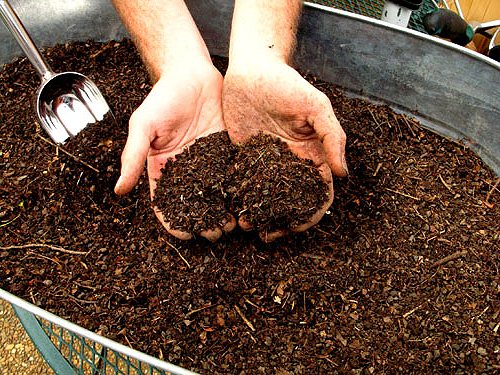

Kneading must be done so that the useful elements are evenly distributed throughout the substrate, and the compost acquires a uniform consistency. Excessive moisture should not be allowed, otherwise the water will wash out the necessary ingredients required for the development and growth of fungi. It takes about 27 days to prepare the compost. It is considered ready when the ammonia smell disappears, the mixture acquires a light brown color, does not stick to the hands, and a dirty mark does not remain on the palms. The substrate temperature should not exceed +25 ° С.
If self-preparation is considered time consuming, and you do not want to wait for the result for almost a month, you can order the mixture at the store.
Care
The most important criteria for growing mushrooms are temperature, light and humidity. It is very difficult to monitor the maintenance of conditions at the desired level on your own, so it is worth purchasing sensors that can be found in any hardware store.
The temperature in the room in which the mushrooms grow should not exceed 24-25 degrees Celsius. If the temperature is higher. Then the mycelium will germinate poorly and, as a result, will be superficial. The moisture content of the soil should be at the level of 55-60%, because a very dry soil adversely affects the growth of fungi.
2 weeks after germination of the mushrooms, the temperature in the room should be reduced to 18 degrees, and the surface should be covered with earth. Further care consists in maintaining the temperature up to 20 degrees, and the air humidity up to 90%. In such conditions, the first mushrooms will sprout by the fortieth day, and will continue to germinate for another three months.
Mycelium preparation
There is a ready-made mycelium on the market. In the case of buying one, you must follow all the points indicated.
Here is information on the example of boletus:
| Planting depth | up to 30 cm |
| Watering | moderate, without stagnant water or drying out of the soil |
| Boarding time | since March |
| Seedlings | in 5-6 months, at the latest in 10 |
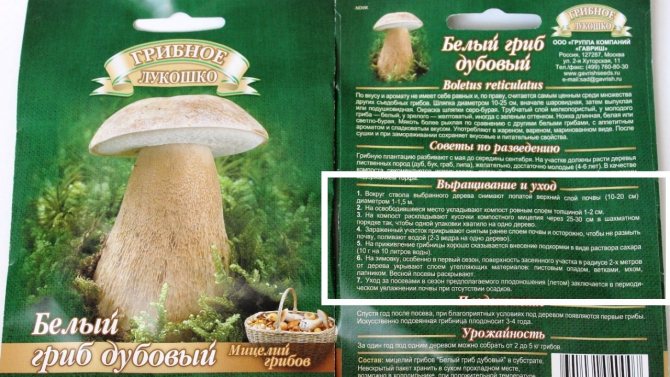

This is followed by a step-by-step instruction, which describes the alternation of layers of substrate, soil, additives.
There is another way - you can get the mycelium yourself. To do this, the caps of adult mushrooms are twisted in a meat grinder or finely chopped with a knife.
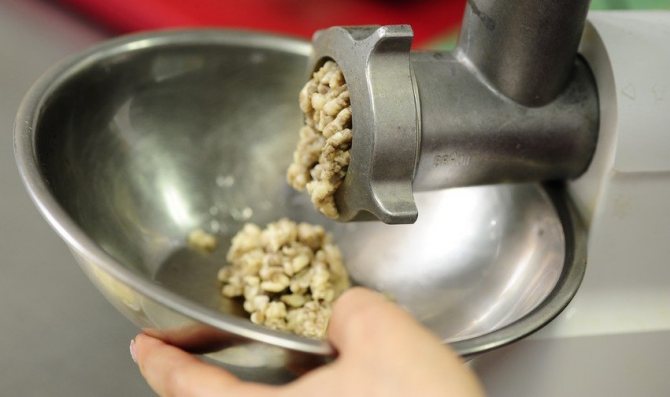

Next, you need to prepare a solution of manganese - 1 g per 10 liters with sugar (take 10 cubes). The crushed parts of the cap are placed in this liquid for 4 hours. The spore nutrient mixture is ready.
Important! An obligatory measure in the experiment of growing mushrooms at home is to disinfect the premises.
Is it possible to grow mushrooms at home
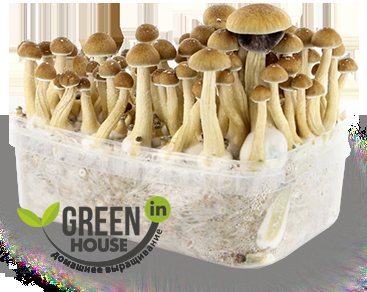

You can read in more detail in the article technology for growing mushrooms at home... But only if carefully and carefully. The fact is that the conditions that are necessary for growing mushrooms (namely humidity and temperature) are such that it is difficult to maintain them at home. Another important factor is the release of spores into the air by ripe mushrooms. Unfortunately, spores are a strong allergen, therefore, with frequent and prolonged contact, they can cause respiratory diseases.
How to grow good mushrooms at home, without harm to health? The most important thing is to harvest on time and regularly. Experts say that the maximum release of spores occurs precisely at the time when the mushrooms are already overripe. It is also worth using a bandage when working indoors with mushrooms.Be sure to comply with sanitary standards when processing the walls of the room in which the seedlings are located with a solution of 1% bleach once a year. Only at a time when the mushrooms do not grow there, otherwise it will slow down the spread of the mycelium and, accordingly, stop the growth of the mushrooms. The easiest way, of course, is to move your small plantation to a basement or garage.
What a novice mushroom picker needs to know
In addition to time and money investments, a novice mushroom picker needs to have an appropriate room. It should be cool, shaded and free of drafts. An excellent option would be a cellar, basement, major garage, greenhouse or storage room. With the onset of warmth, when the air temperature is around 20 ° C, mushrooms can be grown in your garden plot. In the room, the temperature should be maintained within the range of + 12 ... + 20 ° С, with the required humidity - 65-85%. Soil temperature should be kept at the level of + 15 ... + 17 ° С.


The possibility of growing mushrooms at home depends on the following factors:
- premises;
- substrate quality;
- mycelium (mycelium);
- temperature and humidity.
Ventilation is necessary in the room, since during the development of fungi emit ammonia vapors and carbon dioxide. This does not affect the growth of the mycelium, but during the formation of the mycelium, such an atmosphere slows down the growth of mushrooms and harms human health.
Mushrooms don't need light. They can grow in complete darkness. But for maintenance work, you need adjustable lighting. The temperature is measured with an ordinary thermometer and regulated using heating devices (in regions with severe frosts), and irrigation is carried out by irrigation nozzles or hand-held watering cans with a fine sieve are used.
The yield depends on the quality of the mycelium (mycelium), which is evenly distributed over the entire surface of the nutrient substrate. It is a vegetative body of a fungus, it consists of thin knitting threads with a characteristic mushroom smell. It is an important organ that is responsible for nutritional function and reproduction.
The correct choice of high quality mycelium is 50% of success.
How to buy quality mycelium
A beginner in mushroom farming should know what a quality product looks like. Good mycelium has a small fluffy white coating and clearly visible filaments. It looks loose and gives off dampness.
It is difficult for a person without experience to grow mycelium on their own. At all stages, the mycelium requires sterility and special equipment. A high-quality product is grown in laboratory conditions in three ways: by obtaining it from spores, by isolating it from a piece of the fruiting body and using selection. For growing at home, seed is made from mushroom particles, sold in specialized stores and on Internet sites.
High-yielding varieties that are easy to care for are:
- Hayser A15;
- Sylvan 130;
- Somycel 512.
This meadow mushroom mycelium is prolific and unpretentious, and its quality is time-tested. It is sold in packages (1-2 kg) or in liter cans. Taste and nutritional value are the same, the difference lies only in the color of the mushroom. It will be white or brown.
